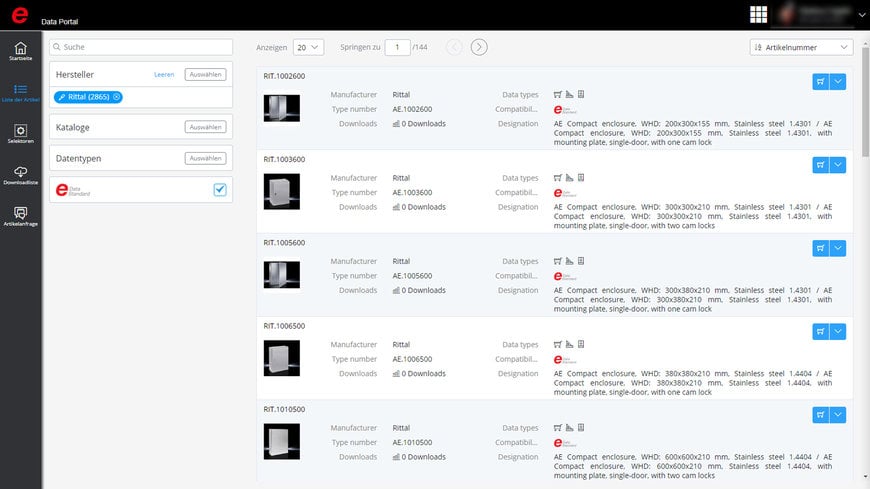www.industry-asia-pacific.com
22
'19
Written on Modified on
EPLAN Sets New Data Standard in Control and Switchgear Construction
By implementing a new data standard, software solutions provider EPLAN contributes to further simplifying control and switchgear construction. The new standard increases the quality of article and device data in EPLAN Data Portal, a web service offering product catalogues from numerous component manufacturers. Several thousand data sets – for instance from Rittal, leading provider of enclosure systems and IT infrastructure – are already available at this premium level, and additional well-known component manufacturers are working on providing data in line with this new standard.

When control cabinets or switchgear systems are being designed in 3D, wire lengths automatically calculated, or mounting panels processed by machines, standardized component data are required. These data are also the foundation for the digital twin, which is becoming increasingly indispensable in the product life cycle. The new EPLAN Data Standard defines the type of component data required to automate and simplify processes in (pre)planning, engineering, manufacturing and maintenance. Users of EPLAN’s engineering software solutions benefit from a significant increase in quality in EPLAN Data Portal, which gives them direct online access to the product catalogues from numerous component manufacturers.
Currently, EPLAN Data Portal has more than 239.000 users and offers data of more than 913.00 products from 286 manufacturers. All of the software solutions embed-ded in the EPLAN Platform can access this web service. The simple transfer of the available component data into EPLAN documentation is via drag and drop, which reduces the effort required in design and increases the quality of machine and plant documentation. Manufacturers are also being optimally supported – the Data Creation Tool based on eCl@ss Advanced offers them an import option that significantly simplifies data provision.
First data in the new standard already available
Several thousand updated component data, with a focus on manufacturing integration, are already available in the new EPLAN Data Standard. This includes, for instance, a schematic macro, a 3D file and connection diagrams for typical electrical components. Rittal – sister company of EPLAN in the Friedhelm Loh Group – is one of the pioneers in this and has already integrated initial data for control and switchgear systems as the standardization of such systems is one of the central USPs of the company.
Renowned component manufacturers including ABB, IFM, LAPP, Phoenix Contact, Puls, SEW-Eurodrive, Siemens, Schneider Electric, Wago, Weidmüller, Wieland and others are already implementing the standard – they all recognized the need for comprehensive, standardized data early on. The optimized, standardized data sets can be used to create complete bills of materials or to reliably calculate the weight of the control cabinet using defined weight specifications as just two examples.
A practical example
Around five hundred connections must be laid for the control technology in an average control cabinet – all with different colors, cross-sections and wire processing. Preparing and wiring all of the connections manually requires an average of four minutes per wire, which takes too long to keep up with the competition. Modern production methods get prefabricated wires from machines, saving the effort and time required for manually cutting to length and assembly. But how does the machine know which individual connections exist? The answer lies in the digital twin of the control cabinet, in which all the components were selected in engineering, presented with their characteristics in the schematics and subsequently assembled in the control cabinet in 3D. The connection points and designations for the components are already described in the 3D layout. Using this component data, the electrical designer can output the colors, lengths and wiring targets for the connections with a mouse click and transfer them to the processing machine.
Find out more at: https://www.EPLANdataportal.de/en/edp/

